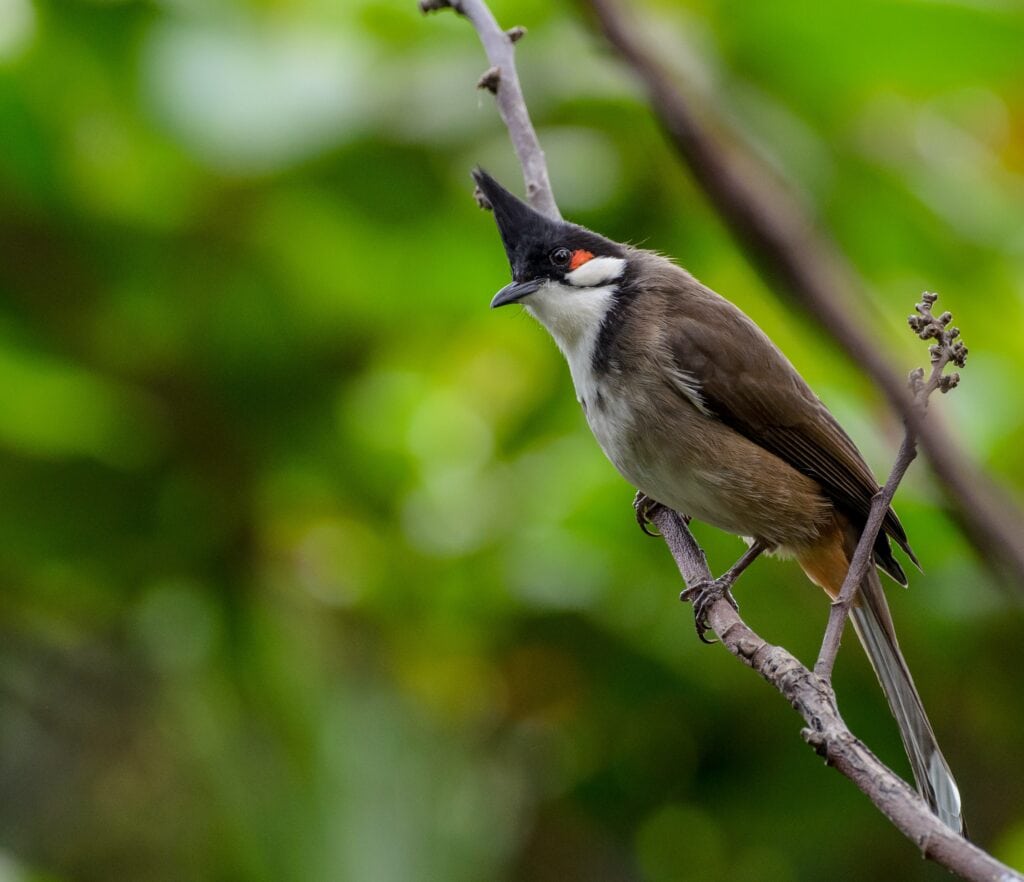Bulbuls are passerine birds native to Africa, the Middle East, South Asia, and Japan. Although these birds belong on the eastern half of the globe, bulbuls have been introduced to regions of the United States, South America, and Australia, where they are considered invasive and can be potentially damaging to the natural flora and fauna.
The bulbul is a fairly common bird in the regions to which it belongs. The word “bulbul” is Arabic in origin and is often used to mean “nightingale” as well as the actual bulbul species. This is somewhat ironic since nightingales are famous for their beautiful singing voices. The bulbul, in contrast, is usually described as having an unpleasant raspy voice. Some consider certain bulbul species to be the worst singers of the songbird family. Despite this, many legends and stories involving bulbuls incorporate their unique songs. Certain species of bulbul, in fact, are used for singing contests where the length and clarity of the birds’ songs are measured against each other and gambled upon. Clearly, distaste for the bulbul’s musical stylings is not a universal phenomenon. (1)
Most Western audiences are less familiar with the bulbul, but further abroad, this bird is an extremely common sight. With appearances that range from unassuming brown plumage to bright rosy cheeks and feathered crests, bulbuls are fascinating birds that often make their way into new territories via the pet trade, which covets them for their personality and often eye-catching looks. Whether you’re researching a long-held interest in bulbuls, or just experiencing this bird for the first time, read on to learn about the bulbul, the symbolism connected with this bird, and some of the ways it has inspired various cultural myths, folktales, and traditions!
Bulbul Symbolism and Meaning
One strange detail about bulbuls that people outside of India may not know is that Red-vented Bulbuls are the center of a traditional fighting event which dates back several hundred years to the early days of the Mughal Empire. Bulbul fighting was outlawed in 2016, for reasons that seem fairly obvious to me. Prior to 2016, though, these events primarily took place in the Indian state of Assam during the yearly harvest festival. Bulbul fights are defended by some as being religiously significant ceremonies which promote unity. Fighting bulbuls were deprived of food to promote aggression. Victorious birds would seize the red vent feathers of their opponents, and be rewarded for their victories with bananas. Although bulbul fighting is now illegal, thanks to concern for the welfare of these birds, this tradition still associates bulbuls with competition, aggression, victory, and blood sport. (2)(3)
Bulbuls are largely monogamous, and, as such, may represent romance or devotion.
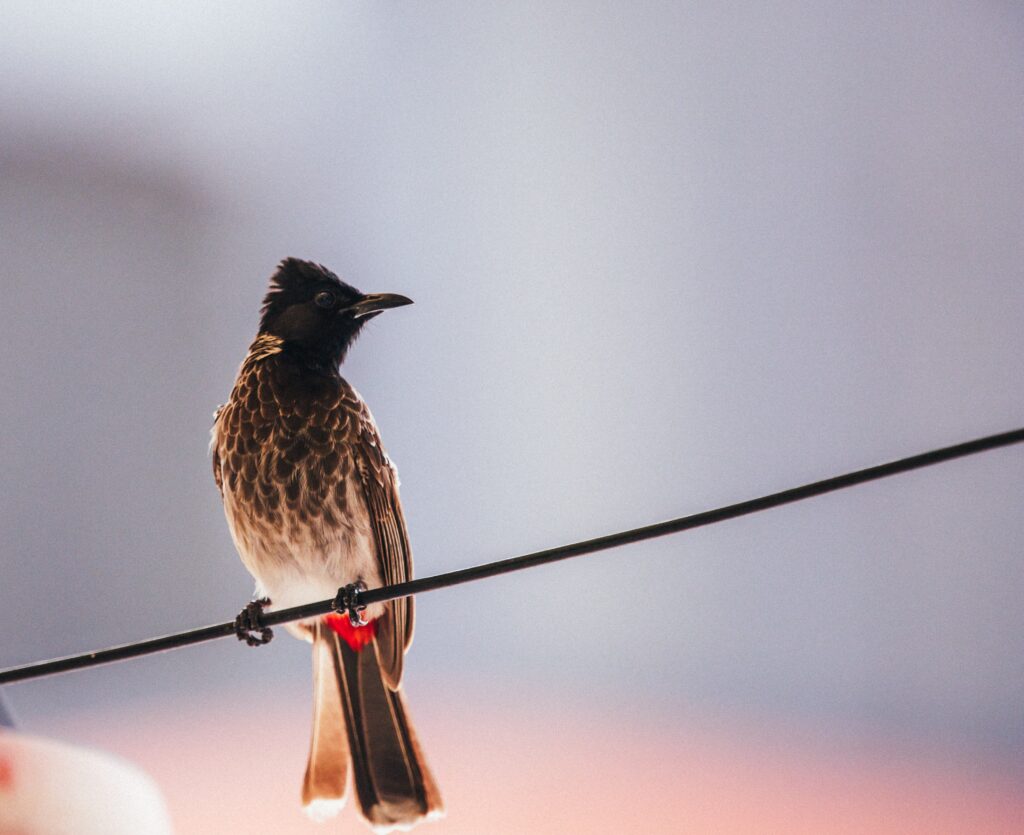
Additionally, bulbuls are so popular within the pet trade because of their unique markings which vary by species but can be quite striking. Some sources indicate that bulbuls languish in captivity and are unsuitable as pets. Others claim that the birds are personable and acclimate to human contact easily. In either case, the trafficking of wild bulbuls is a serious and harmful act which presents a major threat to numerous ecosystems including those from which bulbuls are taken and the habitats into which they are, often inadvertently, introduced. The Straw-headed Bulbul, specifically, is seriously threatened by the pet trade which covets this bird for its beautiful singing voice. Bulbuls may symbolize the dangers of the pet trade and the hubris of humanity trying to own nature’s wonders. The bulbul symbolizes freedom and the need to protect nature’s wild spaces and their inhabitants. (4)
While the Straw-headed Bulbul’s beautiful voice might have fueled demand for this critically endangered bird within the international pet trade, bulbuls are generally regarded as terrible singers with “gravelly” voices that are sometimes described as the most unpleasant voices in all of the kingdom of birds. Thus, bulbuls may represent amateurishness, embarrassment, clumsiness, or failure.
Bulbul Native American Symbolism
Bulbuls are not native to the Americas and are only found recently in limited regions due to invasive populations introduced by the pet trade. Birds in general, however, are often seen in Native American traditions as messengers that travel between the realm of humanity and that of spirits. (5)
Bulbul Christianity Symbolism
Christian symbolism does not incorporate the bulbul, however one might associate the bulbul with the Christian connection between birds and the sacred beauty of creation. (6)
Bulbul Celtic Symbolism
Again, the bulbul is not found in the regions of Europe wherein Celtic cultures developed. In many Celtic traditions, birds are associated with the supernatural forces of the “Otherworld.” Animals with red markings are also especially connected with supernatural forces. (7)
Bulbul in Dreams
Dreaming of a bulbul may indicate that one feels trapped or cornered. Bulbuls are wild animals that often struggle to thrive in captive scenarios. Dreaming of a bulbul may symbolize a situation where the dreamer feels unable to thrive and desperate for a bit of freedom.
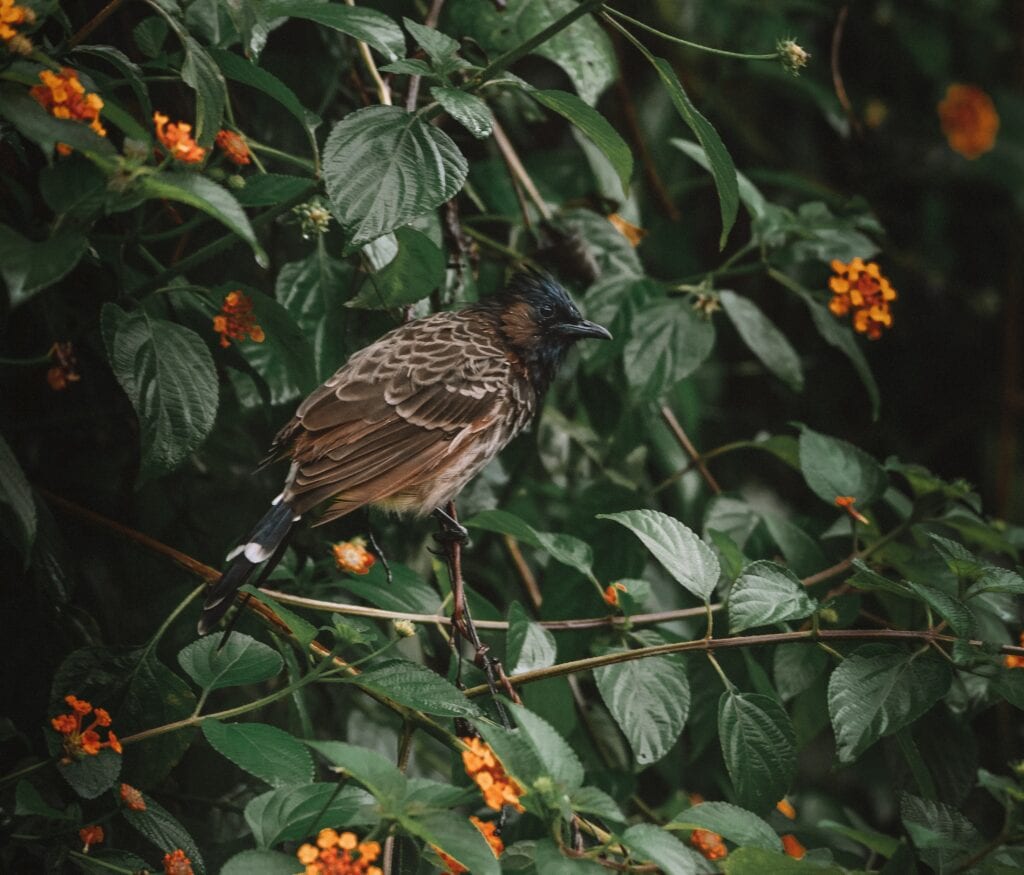
Dreaming of the Red-vented Bulbul can symbolize aggression and competition. A dream in which the red feathers of the Red-vented Bulbul are featured may point to either victory or humiliation depending on the context.
Dreaming of common invasive bulbuls, like the striking Red-whiskered Bulbul, may point to a desire for belonging.
Dreaming of the bulbul’s oft-criticized song may indicate self-consciousness or ridicule. Such a dream may act as a reminder that hobbies should be performed for the joy of performing, not for the sake of perfection. It is better to be a happy amateur than to never try at all.
Bulbul Encounters and Omens
Encountering bulbuls in the wild can be very commonplace in parts of the world, and very unexpected and exciting in others. In any case, a bulbul encounter may represent a number of possible meanings.
Encountering a singing bulbul may indicate “bitter pills.” That is to say that the bulbul’s raspy song might represent something unpleasant that you need to hear. Not every important message goes down easy and it’s often necessary to find a way to metabolize the tougher lessons that life offers. Open your ears, and your mind, and you’ll find all sorts of opportunities for growth.
Encountering a pair of bulbuls may indicate romance or fidelity. Such an encounter may signify romance in the future or an opportunity to deeply connect with an established partner.
Bulbul in Mythology & Folklore
Bulbul mythology is scattered but fascinating! The following are just a few bulbul-related myths and fairytales.
Persian Mythology:
The Persian myth of the “Boy Who Became a Bulbul” associates the bulbul with justice, innocence, and the human soul. In this somewhat macabre tale, a young boy is collecting wood with his father when his stepmother proposes a contest. Whomever of the two collects the most wood must behead the other. The boy’s father accepts the challenge, much to his son’s dismay, and they begin collecting wood. Near the end of the day it is clear that the boy has collected more wood. Thirsty from his hard work, the boy went to a stream to drink some water. While he was gone, the father switched their bundles. When he returned, the father beheaded his son and gave his head to his wife to cook into a stew. (8)
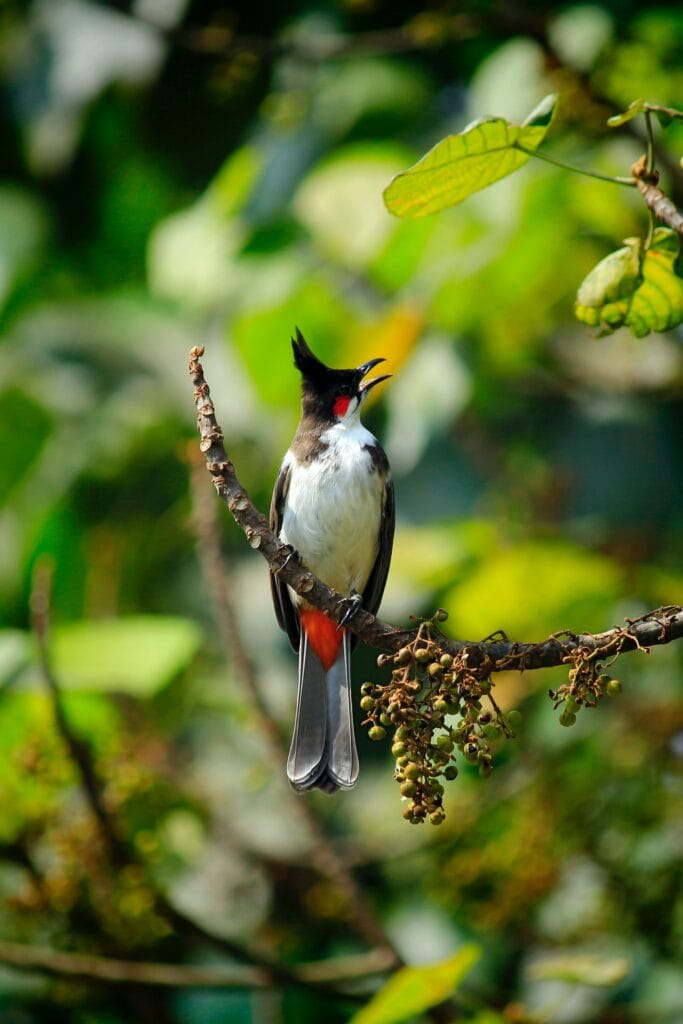
Later that evening, the boy’s little sister, who loved her brother deeply, came home from collecting flowers. She was hungry and asked her stepmother for something to eat. Her stepmother offered her some stew, but the little girl recognized her brother in the stew pot and ran from the house. She ran until she found a priest to whom she told her story. The priest warned the girl not to eat the stew and to collect her brother’s bones and bury them with respect and anoint his grave with rosewater. The girl did so and after several days a bulbul appeared at the grave of the boy. The bulbul sang a song which explained that he was the boy and that all but his sister had wronged him. The song was captivating and everyone who heard it wanted to hear it again. He sang to a needle-maker as a ruse to steal some needles. Then he sang to a candy-maker as a ruse to steal some candy. Then he sang to his stepmother to distract her while he dropped the needle down her throat. Finally, the bulbul sang to his sister before dropping the candy on her lips to reward her for her kindness and devotion. (9)
Indian Mythology:
The story of “Princess Pepperina” is recorded in the 1894 story collection entitled Tales of the Punjab. The stories in this collection claim to be transcriptions of Indian folklore. The story of “Princess Pepperina” begins with a pair of bulbuls. The female bulbul was hungry and asked her mate to find her a green pepper to eat. The male searched diligently, but could find only one green pepper, in the walled garden of a secretive Jinn. Desperately hungry, the pair broke in and ate the green pepper. When they finished, the female bulbul laid an emerald green egg. When the Jinn saw the destruction in his garden he was angry. His anger turned to curiosity, however, when he saw a tiny little girl dressed in emerald green with a pepper around her neck. The girl named herself Princess Pepperina and the Jinn loved her very much and raised her as his daughter. When the girl grew old enough she was married to a king. The story ends with Princess Pepperina being betrayed and killed by the king’s jealous maids. (10)(11)
Bulbul Spirit Animal
If the bulbul is your spirit animal then you are likely to be an outgoing person who connects easily with others but may suffer from a short temper. People who have the bulbul as their spirit animal are often outgoing but may be abrasive or brash in their approach. While not everyone appreciates the bulbul spirit animal’s style, confidence, a cheerful attitude and a good sense of humor often allow the bulbul spirit to become fast friends with almost anyone.
People with the bulbul spirit animal tend to have shorter tempers. In high stress situations they may lash out unintentionally which can be both hurtful and embarrassing. People with the bulbul spirit should make an effort to curb that aggressive impulse as much as possible, while still seeking healthy outlets to let off steam and express frustration. Exercise and competition can be just the ticket for releasing some of the bulbul spirit animal’s aggressive energy, however make sure that competitive atmospheres do not grow out of control.
Bulbul Totem Animal
The bulbul totem animal is associated with justice. People with the bulbul totem have a strong sense of justice which fuels a righteous anger in them when they see injustices being perpetrated. The bulbul totem is not afraid to stand up for what’s right and defend the honor of those too weak or voiceless to stand up for themselves.
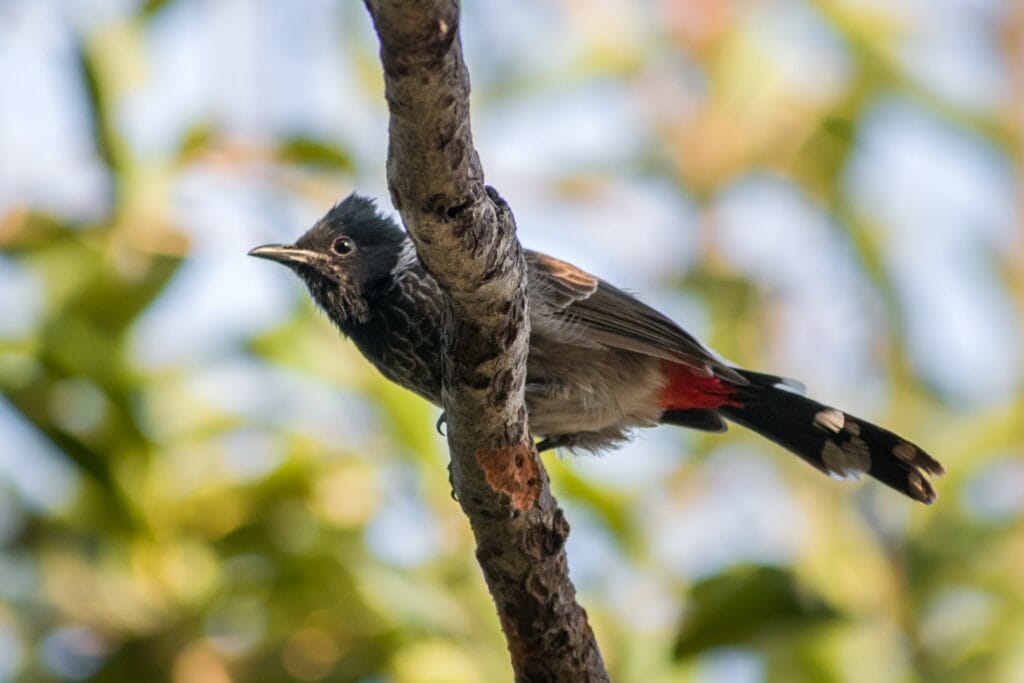
The bulbul totem is connected with hard truths. Honesty may be the best policy, but it’s often difficult to live with. People with the bulbul totem can be candid to a fault when presenting the truth to others. While hard truths are cathartic, people with this totem animal would benefit from practicing tact and gentleness when delivering these difficult messages.
Bulbul Power Animal
The bulbul power animal is associated with virility. People with the bulbul as their power animal are full of life and brimming with energy. If the bulbul is your power animal, then this bird has your back on those days when you feel like staying in bed all day. Think of the bulbul and its fighting spirit and you’ll find the infusion of energy that you sorely need. The bulbul reminds you to seize each day and make it your own.
Bulbul Tattoo Meaning
A bulbul tattoo may represent a number of different meanings ranging from romance to blood sport, to justice. In most cases, a bulbul tattoo can be assumed to represent both a love for birds and an interest in preserving natural habitats. Some bulbul tattoos may have additional cultural meanings.
Conclusion
The bulbul is a bird to which a lot of different images are attached. In fairytales, the bulbul appears as a magical animal which drives magnificent events to occur. In several bulbul tales, however, this bird occurs alongside a major betrayal. The bulbul is full of dual meanings. While most bulbuls are considered grating singers, the most endangered bulbul is in such a precarious position, in part, because of how much people covet its voice. All bulbuls may not look or sound alike, but they share an ability to uplift and inspire the humans who observe them.

